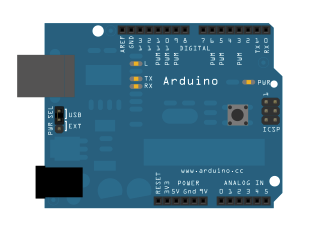Arduino内置教程-字符串-String Constructors
字符串对象结构
- String object允许你用多种方法操作文本的字符串。你可以往字符串里增加字符,组合字符串,获得字符串长度,搜索和替换子字符串,等等。这个教程示范怎么初始化串口对象。
String stringOne = "Hello String"; // using a constant String
String stringOne = String('a'); // converting a constant char into a String
String stringTwo = String("This is a string"); // converting a constant string into a String object
String stringOne = String(stringTwo + " with more"); // concatenating two strings
String stringOne = String(13); // using a constant integer
String stringOne = String(analogRead(0), DEC); // using an int and a base
String stringOne = String(45, HEX); // using an int and a base (hexadecimal)
String stringOne = String(255, BIN); // using an int and a base (binary)
String stringOne = String(millis(), DEC); // using a long and a base
String stringOne = String(5.698, 3); // using a float and the decimal places
- 所有的函数都可以用来声明串口对象。它们都会得出一个对象(包括用任何String函数操作一个字符串的字符)。观察它们运行,更新下面代码到Arduino 或者 Genuino 开发板上,并打开 Arduino IDE 串口监视器。你会看到每个声明的结果。对比每个用println() 打印出来的结果和上面的声明。
硬件要求
- Arduino or Genuino 开发板
电路
- 这个例子不需要连接额外的电路,除了你的开发板需要连接到你的电脑,并且打开Arduino IDE的串口监视器窗口。

图由 Fritzing 软件绘制
样例代码
/*
String constructors
Examples of how to create strings from other data types
created 27 July 2010
modified 30 Aug 2011
by Tom Igoe
http://www.arduino.cc/en/Tutorial/StringConstructors
This example code is in the public domain.
*/
void setup() {
// Open serial communications and wait for port to open:
Serial.begin(9600);
while (!Serial) {
; // wait for serial port to connect. Needed for native USB port only
}
// send an intro:
Serial.println("\n\nString Constructors:");
Serial.println();
}
void loop() {
// using a constant String:
String stringOne = "Hello String";
Serial.println(stringOne); // prints "Hello String"
// converting a constant char into a String:
stringOne = String('a');
Serial.println(stringOne); // prints "a"
// converting a constant string into a String object:
String stringTwo = String("This is a string");
Serial.println(stringTwo); // prints "This is a string"
// concatenating two strings:
stringOne = String(stringTwo + " with more");
// prints "This is a string with more":
Serial.println(stringOne);
// using a constant integer:
stringOne = String(13);
Serial.println(stringOne); // prints "13"
// using an int and a base:
stringOne = String(analogRead(A0), DEC);
// prints "453" or whatever the value of analogRead(A0) is
Serial.println(stringOne);
// using an int and a base (hexadecimal):
stringOne = String(45, HEX);
// prints "2d", which is the hexadecimal version of decimal 45:
Serial.println(stringOne);
// using an int and a base (binary)
stringOne = String(255, BIN);
// prints "11111111" which is the binary value of 255
Serial.println(stringOne);
// using a long and a base:
stringOne = String(millis(), DEC);
// prints "123456" or whatever the value of millis() is:
Serial.println(stringOne);
//using a float and the right decimal places:
stringOne = String(5.698, 3);
Serial.println(stringOne);
//using a float and less decimal places to use rounding:
stringOne = String(5.698, 2);
Serial.println(stringOne);
// do nothing while true:
while (true);
}
更多
- String object – 字符串对象的参考
- CharacterAnalysis - 使用operators来识别对应的特征类型。
- StringAdditionOperator - 用不同方法把字符串加到一起。
- StringAppendOperator - 用+=运算符和concat()方法来添加东西到字符串里。
- StringCaseChanges - 改变字符串的状态。
- StringCharacters - 在字符串里获得或设置一个指定的字符的值
- StringComparisonOperators - 按字母排列顺序地比较字符串
- StringConstructors - 初始化字符串对象
- StringIndexOf - 寻找在字符串里字符的第一个或最后一个的状态
- StringLength - 获得和修剪字符串的长度
- StringLengthTrim - 获得和修剪字符串的长度
- StringReplace - 替换字符串里的个别字符
- StringStartsWithEndsWith - 检查一个给定的字符或子串(substrings)的开始或结尾
- StringSubstring - 在给定的字符串里寻找"phrases"
- StringToInt - 允许你把字符串转换成整数数字